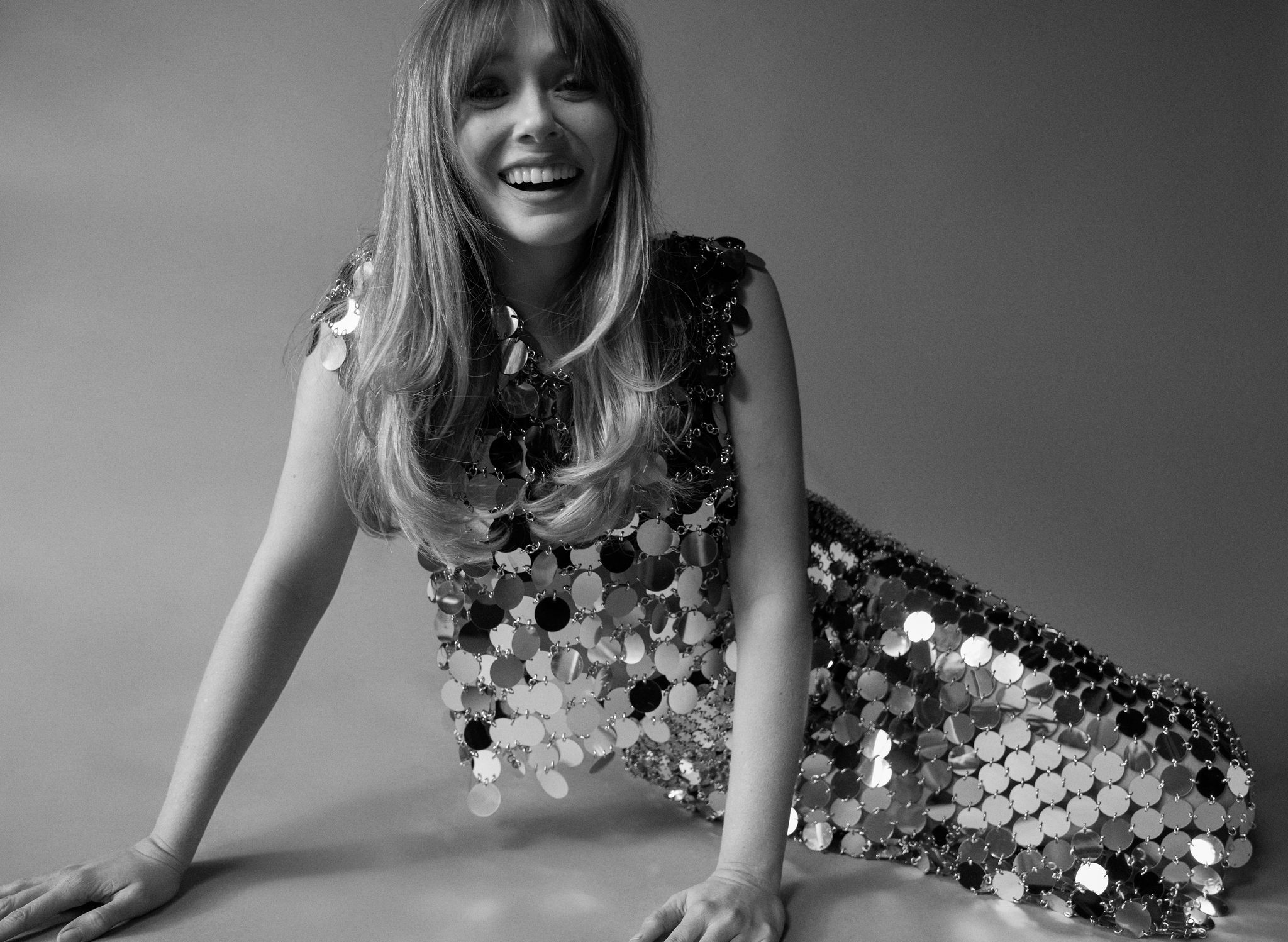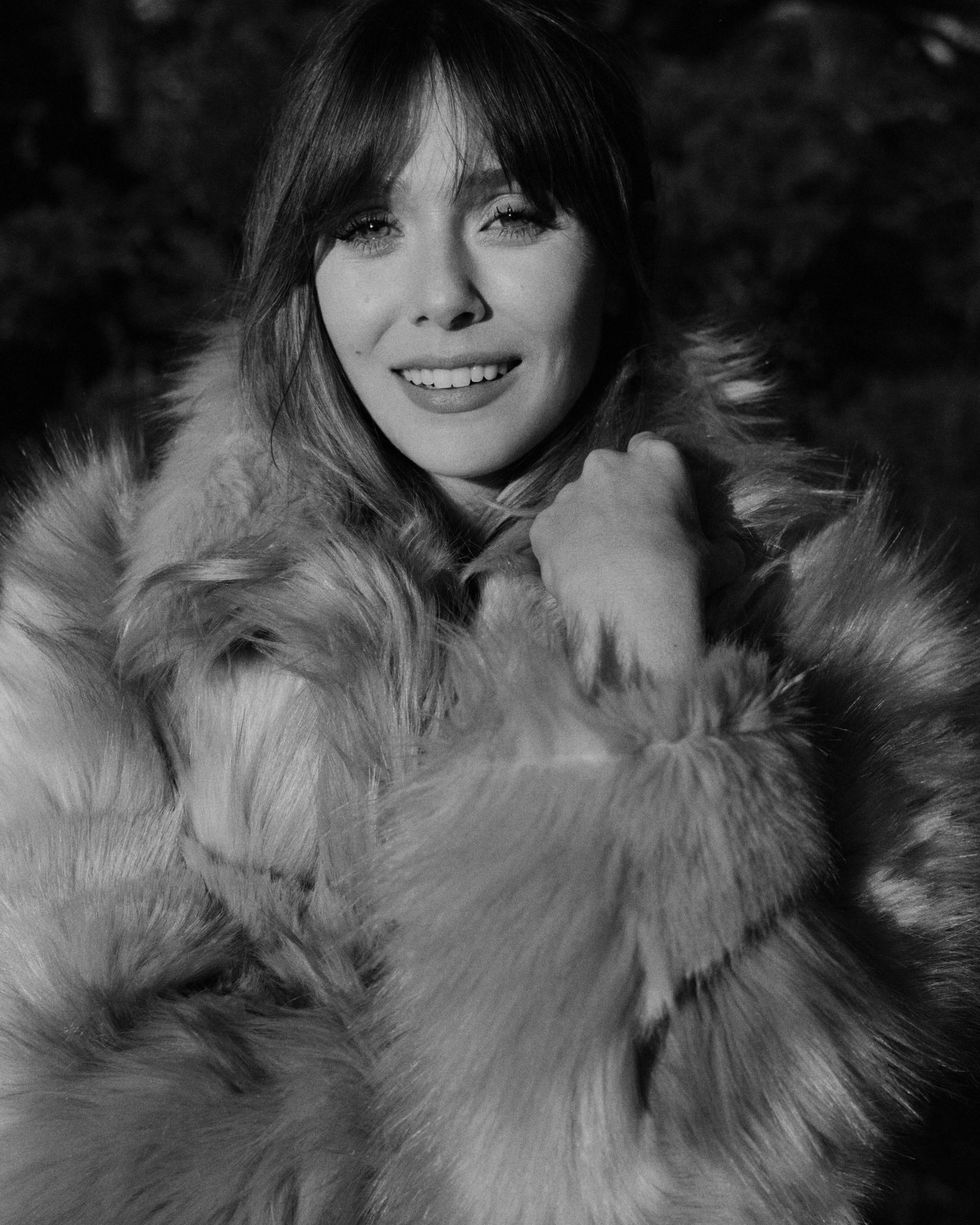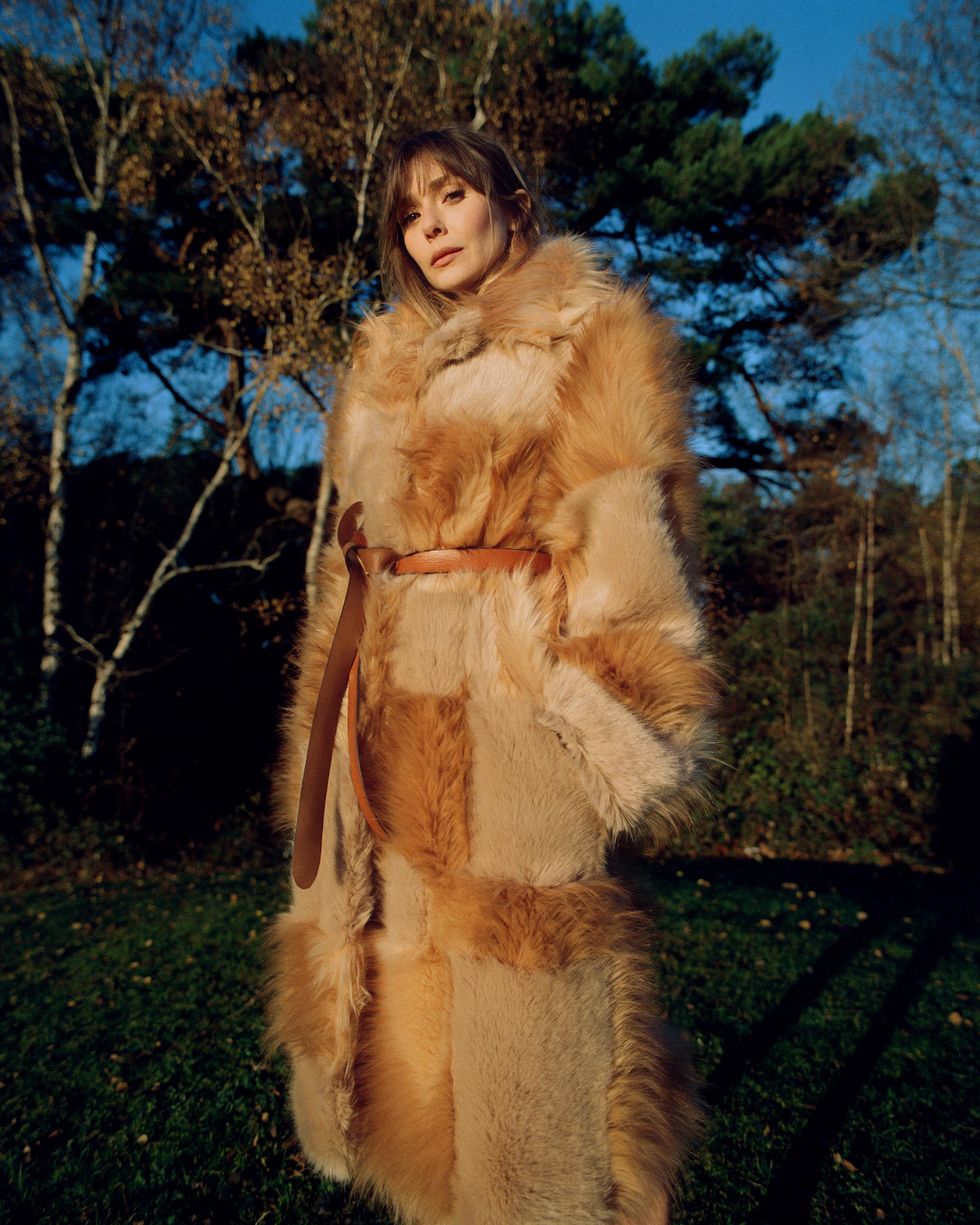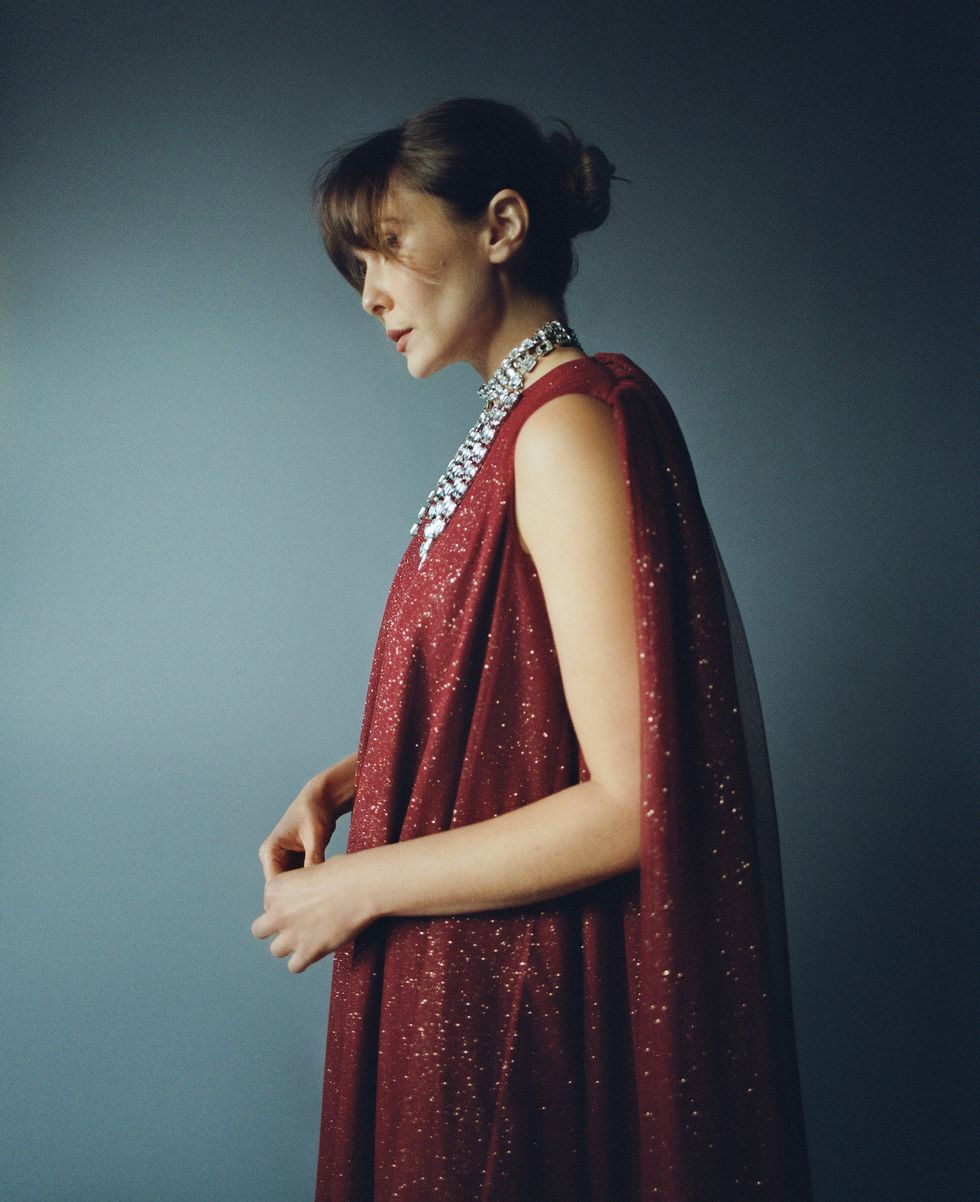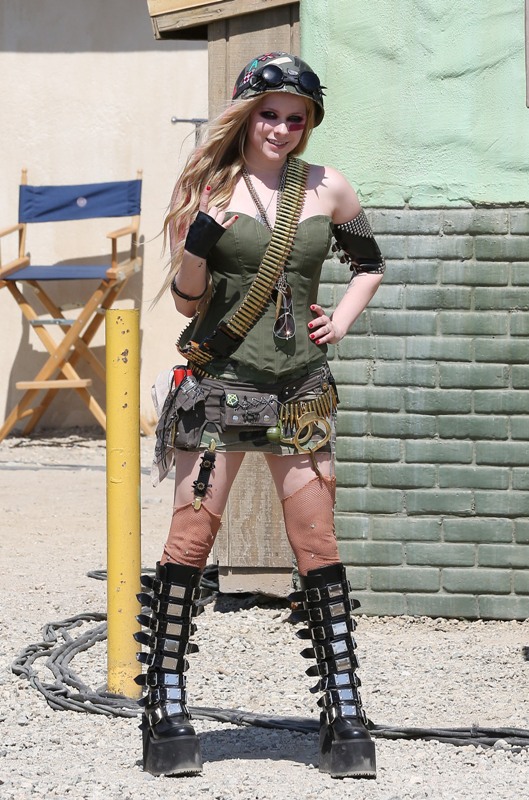“The show is like a blank slate for them,” Olsen tells me over Zoom, her light brown fringe a departure from Wanda's red waves. The Scarlet Witch's doleful glare is also long gone; in its place, Olsen's eyes are wide with excitement. “Wanda and Vision's journey to this point is a story of pure, innocent love and deep connection with another person,” she explains. “It was also very traumatizing. Tragedy has always been their story. In our show, we kind of wipe that clean and start fresh.”
But Wanda’s complicated past looms over WandaVision. Age of Ultron saw her and her twin brother, Pietro, initially opposing the Avengers (the siblings volunteered for a series of experiments with Hydra—a super evil organization within the MCU—after the deaths of their parents at the hands of Tony Stark's Stark Industries) before switching sides to help save the Earth. The movie ends in victory for our superheroes, but yet another tragedy for Wanda when Pietro dies in battle. She finds comfort in the arms of Vision, an android created from the remains of Tony's J.A.R.V.I.S. program, but even that bliss is short-lived. You see, Vision can only live with the help of the Mind Stone, which Mad Titan Thanos needs to take over the universe. In Infinity War, Vision asks Wanda to sacrifice him, and Wanda reluctantly agrees—but Thanos reverses time to gain control of the stone, killing the robot for a second time. Wanda's pain is palpable: Imagine sacrificing the love of your life to save everyone else, just to watch him brought back to life and killed again—by the very villain you’re trying to defeat.
![elizabeth olsen elizabeth olsen]()
AMAR DAVED
![elizabeth olsen elizabeth olsen]()
AMAR DAVED
Coat, Stella McCartney. Belt, stylist's own.
Though the thrill of playing a character with superhuman abilities is enticing for any actress, Olsen says it was Wanda’s internal battle with mental health that attracted her to the role in the first place. “[Joss Whedon] explained to me that Wanda Maximoff has always been this pillar of the struggle of mental health, from her pain and depression and traumatic experiences to how she completely alters the reality of the comics,” Olsen says of her early conversations with the Age of Ultron director. “The thing I held onto after reading the initial script was that she was not only powerful because of her abilities, but because of her emotions.”
In fact, MCU theorists would argue she’s one of, if not the, strongest Avenger. She can infiltrate the others' minds to reveal their biggest fears (Age of Ultron). She can overpower Vision and send him plunging through several floors to break up a fight between warring superheroes (Avengers: Civil War). She can even bring Thanos to his knees, snapping his sword in half and forcibly removing his armor piece by piece (Infinity War).
Still, “they keep slapping her over the head with more grief,” Olsen quips.
As phase one of the Marvel Cinematic Universe began with the sound of clanging metal on May 2, 2008, phase four kicked off on January 15, 2021 with a kitschy 1950s sitcom theme: “She’s a magical gal in a small town locale / he’s a hubby who’s part machine / How will this duo fit in and pull through? Oh, by sharing a love / like you’ve never seen.”
With WandaVision, Marvel steers clear of the typical superhero trappings: no destructive battles at a Berlin airport or across the streets of New York City; no blonde-haired god time-traveling to other realms; no tree-like alien fight alongside a raccoon. Wandavision takes place after the events of Endgame in a fictional suburban town called Westview, and the biggest problem the newlyweds face in the show’s opening moments is creating a convincing backstory to get nosy neighbor Agnes (Kathryn Hahn) off their backs.
![elizabeth olsen elizabeth olsen]()
Dress, Emilia Wickstead. Necklace, AREA.
